| Revista Umělec 2007/1 >> We are all star stuff | Lista de todas las ediciones | ||||||||||||
|
|||||||||||||
We are all star stuffRevista Umělec 2007/101.01.2007 Lenka Dolanová | video art | en cs de |
|||||||||||||
|
From the beginnings of Chicago Video Art
"It was this way in general, but mainly in Chicago, where there were many common goals, great ideas; lots of associated equipment and resources." (Dan Sandin) "Video Art is not Mona Lisa but it’s fun in its own way." (Phil Morton) The so-called “Chicago School of Video Art” is considered to have been one of the most interesting groups engaging in video experiments in the seventies and as a community it survived longer than the New York circle. Woody Vasulka, a video artist, commented on the Chicago artists’ group in a catalogue dedicated to the pioneers of video art in this somewhat obscure manner: “But I do not know enough about them to fully understand their inner dynamics. They always appeared self-satisfied, confident and full of rare knowledge. Their form of technological commune was the most refined, full of techno-sexual rituals, electro-erotic practices and secrets, which despite their obsession with the open dissemination of knowledge, have never been made public.” Chicago video art was interconnected with movements supporting political change and a desire to reform the system of education. The very process of video making represented a part of an experimental life style. In 1970, the first department of video art in the country, called Video Area, was established at the School of the Art Institute of Chicago (SAIC) thanks to the efforts of video artists Phil Morton and Dan Sandin of the University of Illinois at Chicago (UIC). The activities of this department focused most of all on the systems of electronic visualization, which were used through the mediation of Image Processor aka I.P. invented by Dan Sandin as instruments for experimentation. At the same time, a program called Electronic Visualization Laboratory (EVL) was founded by Dan Sandin and Thomas DeFanti at UIC. EVL was founded as a link between the technical College of Engineering and the artistic School of Art & Design and according to the information presented on their web pages, it is considered to be “the oldest formal collaboration between engineering and art in the country.” The laboratory also dealt with applications for video games or creating computer-generated holograms, e.g. computer graphics created by Larry Cuba in the years 1976-77 for the Star Wars series utilized the hardware as well as software of EVL. At present, EVL serves as an interdisciplinary research laboratory combining art and computer science which specializes on advanced visualization and network technologies. Chicago Editing Center was another important artistic-political and activist group offering technical support in editing. The last organization to be mentioned is Video Data Bank, with its head office located on the third floor of SAIC, which is the owner of one of the most significant collections of video art in the world and which ranks among its leading distributors alongside e.g. Electronic Arts Intermix operating in New York. Officially, it was founded by Kate Horsfield, its present Executive Director, and Lyn Blumenthal in 1976. The history of this organization, not unlike many other similar institutions, began in a very informal manner – by storing all videotapes which were produced at this Institute in one room. An essential part of their activities was represented by recordings of artists and critics who came to the Institute to present their lectures and later also recordings of many other artists outside the scope of the Institute. This group also increasingly focused on the distribution of videotapes. VDB’s most significant initiatives include issuing the series “Surveying the First Decade. Video Art and Alternative Media in the United States” representing a 17-hour long selection on 9 VHS tapes collecting works since the very beginning of video art prepared for VDB by Christiane Hill. VDB is open to the public and the works can be viewed for free in the projection room of the Institute, or possibly rented. Chicago hosted several collective events in video art per year; the tapes were shown at schools, in the artists’ own apartments as well as in bars. In her interview for criticalartware, Kate Horsfield said that the only way of distributing videotapes was the so-called “biking,” i.e. transporting tapes from one place to another by bikers: “Someone would send Phil Morton a tape and he would invite everybody over to his house to look at it.” Sharing and collaboration activities were essential because of the necessity to share technologies. The equipment required for making records of modified tapes cost as much as a car (a portapack camera cost approximately one thousand dollars and used Volkswagens were about twelve hundred at the time). Individuals could afford to buy or modify a piece of equipment but in most cases not the complete equipment needed for the entire production process. Dan Sandin Dan Sandin (1942) is considered one of the most significant artists-designers who develop their own equipment for image processing. After having graduated in physics from the University of Wisconsin, Sandin joined the UIC in 1969 with the intention of complementing the curriculum with a course on computer design. First he focused on photography, experimenting with video loops, generating holograms by means of a computer and creating computer-operated settings. Apart from inspiration by works by Eric Siegel or Nam June Paik who were the first artists engaging in the manipulation of electronic signals, Sandin stresses the significance of a film called Off/On by Scott Bartlett made in 1969, a “video film” combining in a very inventive manner techniques of video and film making: “It was a kind of transforming moment, at the University of Wisconsin their film studies program had screenings in the evenings and they were open to the public. For free. There were a series of experimental films, Fischinger films, animations, maybe Disney in a sense, a lot of abstract animated films which instructed me a lot. But the most personal thing why I just wanted to do what I ended up doing that was watching OFF/ON. I said: that’s great, I want to do that.” The theories which he finds the most influential include the work of Marshall McLuhan as well as the theories of Buckminster Fuller, architect and theorist, or the group around Radical Software magazine which started to be issued in 1970 by Raindance Corporation, a collective of artists, writers and radical visionaries whose ideal was to develop an alternative information code arising from a visionary combination of technology, art and social science. All creators had a uniting idea that they were developing a specific kind of radically different things which had not so far been achievable since equipment for real time video-making had simply not been available. Phil Morton Phil Morton (1945-2003) started to teach at School of the Art Institute in 1969, where his archive is at present being organized and processed by Jon Cates, artist and pedagogue, and his students. Morton contributed to the original formation of a Video Data Bank, and in 1974, he founded the “P-Pi’s,” or Pied Piper Interactioning System, a cable TV station in South Haven (Michigan) and later also a private production company called Greater Yellowstone News, which published above all his own videotapes with news about wildlife. Morton’s traveling bug and love of nature influenced his approach to the medium of video to a large extent. He often made videos when traveling across the U.S. and consequently incorporated the documentaries shot during these travels into his composed video works. These tapes from “travels” created in cooperation with Jane Veeder combine travel records (often modified in various ways) and computer graphics, video art images often accompanied by unrelated real sounds, pictures from TV interviews, lectures and performances, informal conversations with friends commenting on the first video-experiments, extracts from early video games, etc. Most of Morton’s videotapes, which I had the chance to see, are characterized by playfulness and a self-reflecting aspiration to map the state of technology and experimenting with technology. The SAIC Memo tape made in 1978 starts with a computer jumble of key terms: philosophy, neuroelectronics, copy I.P. During his four-month long “initiatory” journey across America on a motorbike which covered twenty thousand miles, Dan Sandin is said to have realized that the goals he had wanted to achieve when making photographs and films, could be achieved by means of the medium of video with the use of a sophisticated video equipment. In the years between 1971-1973, Sandin therefore designed and set up an Image Processor, an analogue computer used for processing video images. He drew his inspiration from his experience with music synthesizers, in particular with Moog Model 2: “The mental genesis of IP was to ask the question about what would it mean to take a MM2 and make it image processing equipment, what would that require.” Thus, this equipment originated as an equivalent of an analogue sound synthesizer, modified to process real time images. The machine, programmable by means of interface patches (“patch programmable”) was about to become an alternative to a TV studio, yet available to an individual. After Sandin had assembled the prototype of this machine, he was contacted by Phil Morton asking whether he could construct his own copy of the machine. Since Sandin realized that he actually did not know how to put the machine together again, they made an agreement that they would cooperate, set up a copy of the machine and at the same time create a documentation of the process for people who could potentially be interested in doing so as well. In the course of the following years, approximately twenty more copies were assembled some of which were even equipped with new modules. Sandin made his technical drawings of the machine available for five dollars, which covered postal charges and Xerox expenses. His only requirement was that each user was to give him one sample videotape made using a copy of his machine. I.P. was introduced as an open source available for free use and Dan Sandin published a manifesto called “Distribution Religion” supporting distribution of copies. This machine became the key “toy” of the Chicago video scene; in Chicago alone, about fifteen of these machines were used. The first technical presentation of I.P. was made by Dan Sandin and Tom DeFantim at the first annual Siggraph Festival (1974) and called “Computer Graphics as a Way of Life.” As Sandin commented, they really felt that these machines were able to transform human life. In order to implement artistic visions by means of technology, an artist has to distribute the production equipment in which case the following processes created using these “distributed” equipment result in the distribution of their own imaginative capabilities which thus influence the subsequent works of art. According to Dan Sandin, it was this technical capability of these practical artists which the Chicago scene was known for. Chicago artists were sufficiently technically confident and they believed that to make videos, one has to understand video technology and be able to develop equipment exclusive for this medium. At the same period of time, other similar machines appeared. Their functions often overlapped and had many common qualities, e.g. the analogue synthesizer Rutt/Etra (Bill Etra, Steve Rutt), which had a similar structure as I.P. However, it was possible to combine both these instruments and create works utilizing the advantages of both of these machines. In addition, one could modify their programs in order to produce things which the designer had never thought of. Other machines were mostly more specialized, set up to follow only one type of rather elementary function. Video Performances I.P. introduced new capacities of image manipulation which had not been achievable before, it allowed artists to create and transform video and audio data and was used at live audiovisual performances anticipating long in advance today’s VJ-ing, with the use of such applications as Max/MSP. Dan Sandin stresses the dissimilarities between I.P. and the far less tactile modern digital equipment, especially the potential of the I.P. to be used as a physical object, i.e. nearly as a musical instrument. Making videos with the use of I.P. had the quality of improvising as well as rehearsing; the most successful events organized by the Chicago community were performances. The “live” aspect of early video was to a large extent stimulated by the non-existence of programs which would preserve images, the individual tapes could be mixed only “live on the spot” and the equipment tempted the artists to improvise. Dan Sandin comments: “In the 1970s if you wanted to make a videotape, you got your friends together and made a videotape; it was like going to lunch. It was all live, it was all rehearsal, and at the end of the session it was kind of done. Video now has become more like filmmaking.” Video/computer performances called the Spiral, which regularly took place from 1975-1980 at UIC as a part of a series of events called EVE ("Electronic Visualization Event“) became very famous. They were based on live electronic music interconnected with the improvised pulsing image of a spiral presented on several monitors and created thanks to the connection of the system of analogue I.P. operated by a “truly colorful person” Dan Sandin and a computer graphic system of Thomas DeFanti. The informal host of the evenings was a charming Phil Morton and video recordinngs of these performances resemble a mysterious ritualized party of some sect (with the support of the bizarre headgear which Dan Sandin was famous for), the activities of which will presumably stay covered with a impenetrable, hallucinatory electronic haze forever. The Chicago group is also characterized by the utilization of a specific kind of self-reflection. The works of Phil Morton produce feedback resulting as a consequence of making videotapes the specific topic of which is the documentation of his own creative process and life phases, or directly as a consequence of immediate video feedback. Sandin presents his machine on a five-minute tape called 5 Minute Romp Through the IP (1973) through manipulations modifying the image of his own person explaining at the same time how the machine functions. Chicago now At present, the greatest development is being achieved in the field of software technologies and the real disciples of video art pioneers are those who experiment with new ways of image processing, often in connection with sound. In Chicago, there still exists a significant group of artists-developers who are active in the open source movement, and organize conferences and festivals (e.g. the annual Version Festival, which focuses on the interactivity of art, technology and activism). The most interesting innovators in the line of artists-designers include young artists and activists of the criticalartware circle who are following the pioneering initiatives of (not only) Chicago founders and attempting to develop a new media discourse. They conduct interviews with key personalities of early electronic art as well as with contemporary experimenters, which are available on their web pages as shared cultural sources and they consciously continue to support Sandin’s early attitude presented in his Distribution Religion. In 2003, Jon Cates of criticalartware created a film called Old School Revolutionaries produced in honor of Chicago experimenters and dedicated to the memory of Phil Morton. A computer introduction in the style of Morton’s videos is followed by a torrent composed of archive records of the early Video Area (works by the above-mentioned artists as well as scenes from performances or excerpts from lectures by Gene Youngblood, Steina and Woody Vasulka and Barbara Buckner) presented without any commentary, only accompanied by electronic music. The criticalartware group cooperates with the Busker gallery which opened its premises in a Chicago district called Pilsen in a former flower shop in the summer of 2006. These non-commercial premises run by artists (the gallery was established by Tamas Kemenczy and Nicholas O’Brien in 2005) represent a specific physical connecting point of Chicago new-media techniques. They organize real-time performances experimenting with new ways of interference of sound, images, exhibition, video projection, discussion, hackmeetings, etc. The activities of criticalartware theoretically as well as practically reflect the history of electronic art, and at the same time they transform this inspiration by means of the latest production equipment. By seeking the parallels between the early video art movement and the present state of artware/new media, they strive to connect contemporary activities with the past. Mapping out the early period of artware and video art can help disclose the technological visions which have not been fulfilled yet and contemplate the possibilities of implementing these visions using new equipment.
01.01.2007
Artículos recomendados
|
|||||||||||||
|
04.02.2020 10:17
Letošní 50. ročník Art Basel přilákal celkem 93 000 návštěvníků a sběratelů z 80 zemí světa. 290 prémiových galerií představilo umělecká díla od počátku 20. století až po současnost. Hlavní sektor přehlídky, tradičně v prvním patře výstavního prostoru, představil 232 předních galerií z celého světa nabízející umění nejvyšší kvality. Veletrh ukázal vzestupný trend prodeje prostřednictvím galerií jak soukromým sbírkám, tak i institucím. Kromě hlavního veletrhu stály za návštěvu i ty přidružené: Volta, Liste a Photo Basel, k tomu doprovodné programy a výstavy v místních institucích, které kvalitou daleko přesahují hranice města tj. Kunsthalle Basel, Kunstmuseum, Tinguely muzeum nebo Fondation Beyeler.
|







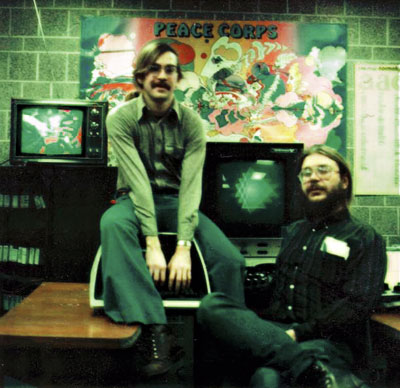

















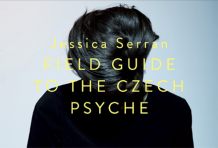





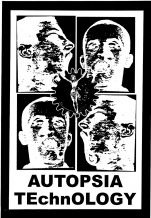
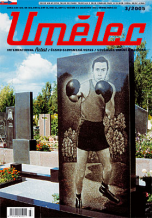
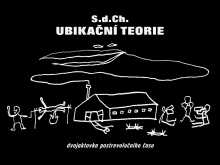


 New book by I.M.Jirous in English at our online bookshop.
New book by I.M.Jirous in English at our online bookshop.
Comentarios
Actualmente no hay comentariosAgregar nuevo comentario